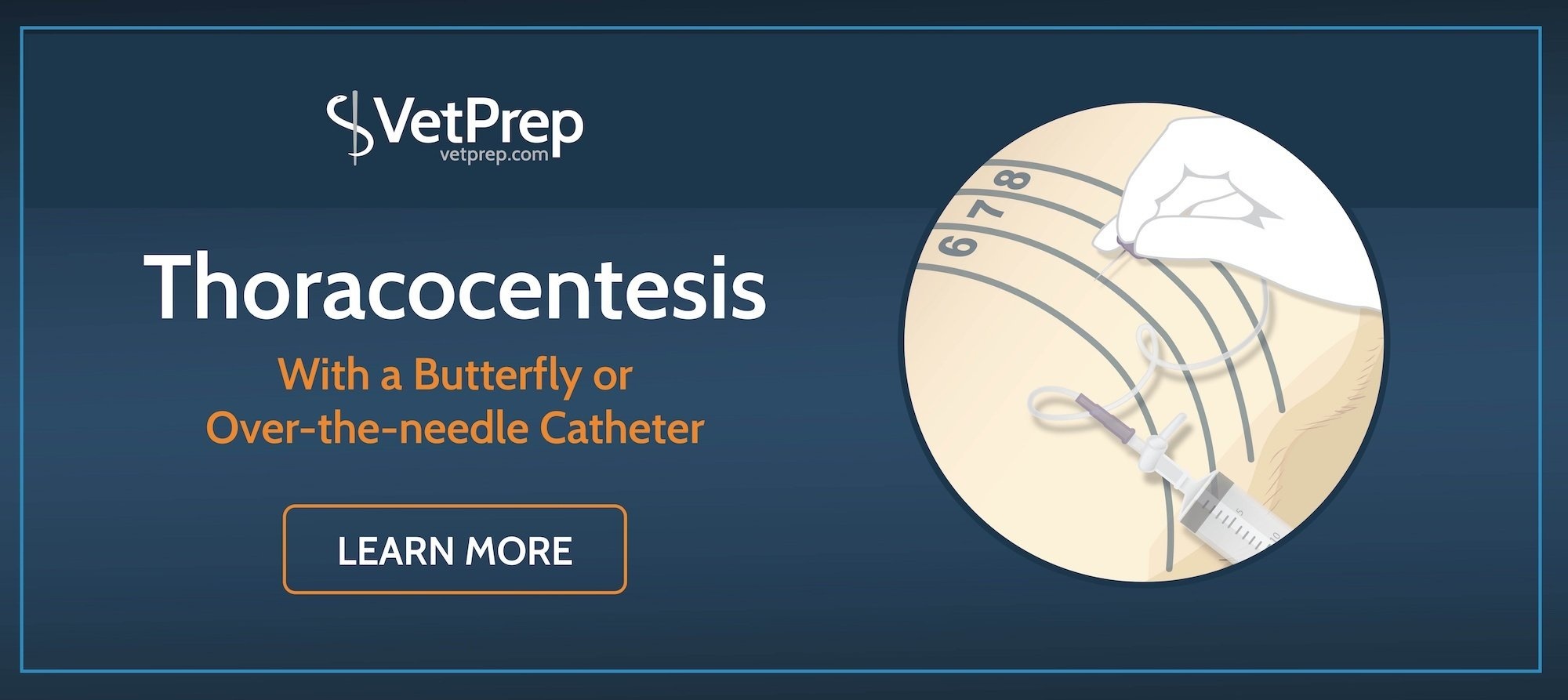
There are several basics and veterinary phlebotomy supplies you will need when drawing blood on pet patients. It is wise to gather all your supplies before you enter the exam room.
1) First you will choose the appropriate size syringe for the quantity of blood you will require for your test.
 Second, you will choose the correct size needle based on the size of the sample you require and the size of the patient. For a heartworm test or FeLV/FIV test that only requires 3 drops of blood, you may just use a tuberculin syringe.
Second, you will choose the correct size needle based on the size of the sample you require and the size of the patient. For a heartworm test or FeLV/FIV test that only requires 3 drops of blood, you may just use a tuberculin syringe.
For a full blood panel including specialized tests, you may use a 6 cc syringe. For basic CBC and Chemistry, 3 cc is usually sufficient. For most pets, we use 22g needles. For large dogs when you need higher quantity samples, a 20g is often used. If drawing blood from a large dog who is donating blood, an 18g is used.
If you are drawing blood from a cat, you may choose to use a butterfly catheter when drawing from the medial saphenous vein if the cat won't cooperate for a jugular stick.
You will need alcohol to wet and disinfect the patient's fur/skin prior to drawing your sample.
2) Know what blood tubes you will need for the test.
Here is a list of the most common tubes we use and what they contain:

Purple/Lavender-Top Tube
- Contains EDTA as the anti-coagulant. It prevents coagulation by binding to calcium ions (calcium is required for clotting).
- Cell constituents are stable for up to 24 hours in a purple-top tube.
- This is the tube used for running a complete blood count (CBC), hematocrit/packed cell volume, reticulocyte count (immature erythrocytes), or any counts of the aforementioned cells.
- Purple tops are also used for collecting fluid that may clot from body cavities in which cell counts need to be performed. This may include cerebrospinal fluid, peritoneal or pleural effusions, and synovial fluid.
- These samples are not centrifuged because there is no clot to be separated.
Speckled Red-Top Tube (Tiger Top)
- Serum separator tubes - contains a clot activator and gel for serum separation.
- Used for chemistry panels and are used to check any laboratory value seen on these panels and other tests requiring a serum sample. This is the majority of tests (BUN, creatinine, ALT, ALP, triglycerides, cholesterol, electrolytes, etc.)
Plain Red-Top Tube
- Glass tubes have no additive; plastic tubes have clot activators.
- Red-Top Tubes are used in immunology and in some specialized tests such as phenobarbital levels
- These can also be used as a sterile tube for collecting samples for culture such as urine.
Light Blue-Top Tube
- Contains Sodium citrate - citrate is an anti-coagulant that binds calcium in the blood.
- For accuracy, these tubes must be completely filled to recommended level. The appropriate ratio is 9 parts blood to 1 part citrate.
- Used to check for coagulation disorders which may include testing of Prothrombin time (PT), Partial Thromboplastin Time (PTT), Fibrin Degradation Products (FDP), D-dimer, von Willebrand Factor, and other factor and fibrinolysis assays.
Green-Top Tube
- Green tops are plasma separator tubes (PST).
- These tubes contain heparin - heparin activates antithrombins, which block coagulation.
- Produces a whole blood/plasma sample and is used for collecting a plasma sample.
Gray-Top Tube
- These tubes contain sodium fluoride, which is best known as a glucose preservative, and some contain potassium oxalate
- Used most often if an accurate glucose measurement is needed and sample processing will be delayed. A blood glucose tested from serum in a red- or tiger-top tube in a delayed sample will be falsely low due to ongoing glucose metabolism by red blood cells in the tube.
3) After collecting your samples, make sure you label all tubes with the patient's full name and date.
This is critical, especially when you have multiple patients that are having blood draws. I recommend that you remove the needle and open the tube to put the blood in.
The vacuum when putting the needle in the tube can sometimes cause lysis of the cells. If you do use the vacuum, let it flow in naturally, don't push the blood in at a high speed.
All of this information is part of obtaining a patient history.
|


 Thoracocentesis
Thoracocentesis